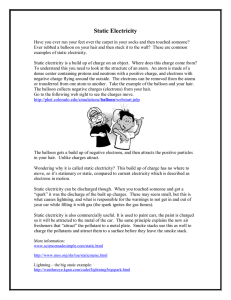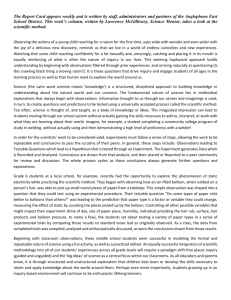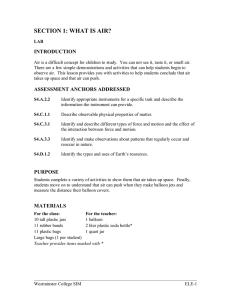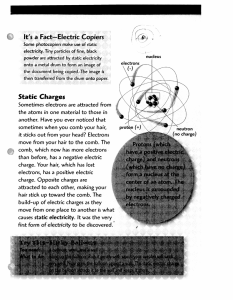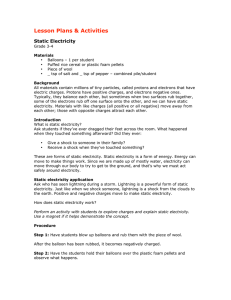What is static electricity?
advertisement
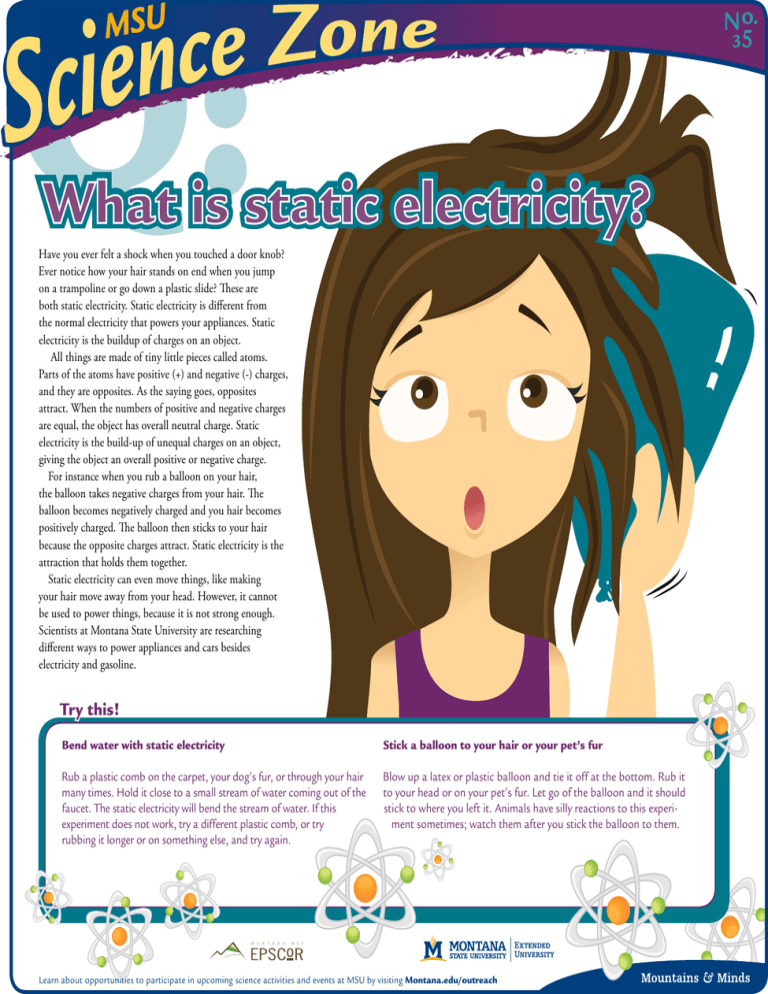
Q: MSU No. 35 What is static electricity? Have you ever felt a shock when you touched a door knob? Ever notice how your hair stands on end when you jump on a trampoline or go down a plastic slide? These are both static electricity. Static electricity is different from the normal electricity that powers your appliances. Static electricity is the buildup of charges on an object. All things are made of tiny little pieces called atoms. Parts of the atoms have positive (+) and negative (-) charges, and they are opposites. As the saying goes, opposites attract. When the numbers of positive and negative charges are equal, the object has overall neutral charge. Static electricity is the build-up of unequal charges on an object, giving the object an overall positive or negative charge. For instance when you rub a balloon on your hair, the balloon takes negative charges from your hair. The balloon becomes negatively charged and you hair becomes positively charged. The balloon then sticks to your hair because the opposite charges attract. Static electricity is the attraction that holds them together. Static electricity can even move things, like making your hair move away from your head. However, it cannot be used to power things, because it is not strong enough. Scientists at Montana State University are researching different ways to power appliances and cars besides electricity and gasoline. Try this! Bend water with static electricity Stick a balloon to your hair or your pet’s fur Rub a plastic comb on the carpet, your dog’s fur, or through your hair many times. Hold it close to a small stream of water coming out of the faucet. The static electricity will bend the stream of water. If this experiment does not work, try a different plastic comb, or try rubbing it longer or on something else, and try again. Blow up a latex or plastic balloon and tie it off at the bottom. Rub it to your head or on your pet’s fur. Let go of the balloon and it should stick to where you left it. Animals have silly reactions to this experiment sometimes; watch them after you stick the balloon to them. M O N T A N A N S F Learn about opportunities to participate in upcoming science activities and events at MSU by visiting Montana.edu/outreach

